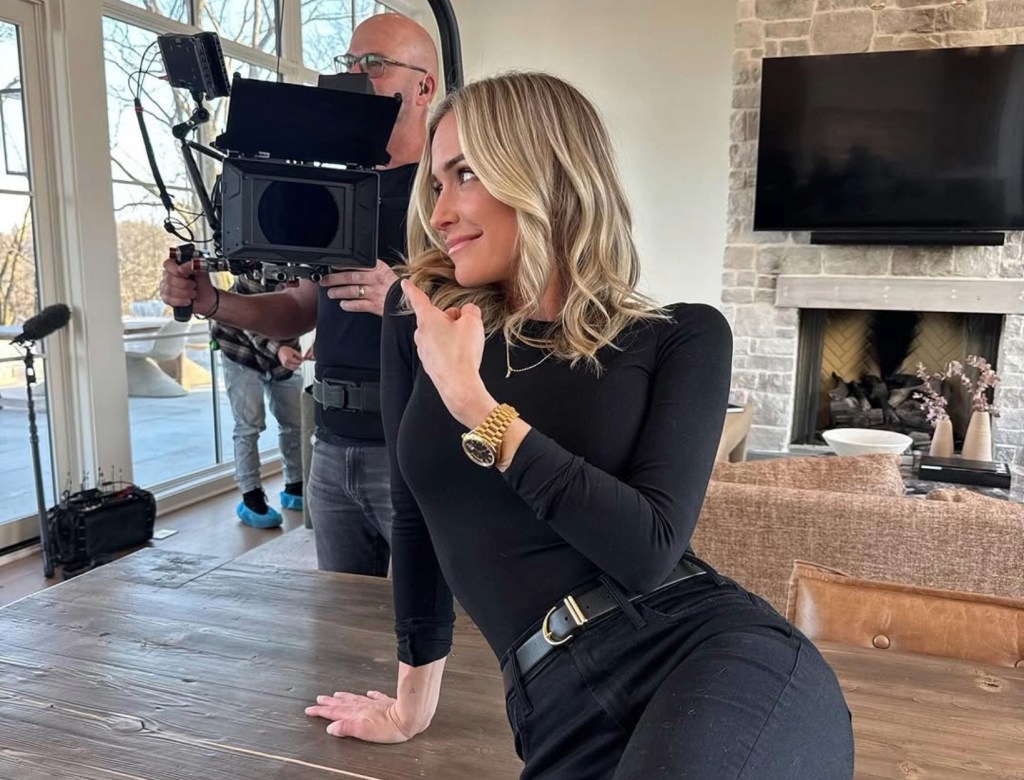What Is Face Taping? Here’s Everything You Need to Know, According to a Dermatologist

Ever since we first heard that face taping might be the key to Anne Hathaway’s seemingly everlasting youth, this beauty trend has been top of mind. Face taping is the anti-aging method du jour, taking over our FYP overnight and becoming a hot topic of discussion in every group chat. But does it really work, or is it just another fleeting trend?
On Derm Approved, Dr. Sheila Farhang sat down with Arielle Lorre, the influential voice behind The Well podcast, to unpack the science behind face taping and other innovative alternatives to traditional aesthetic treatments like Botox and fillers. They also explored how wellness habits—think lymphatic massages, acupuncture, and red light therapy—can elevate your skin health from the inside out.
To go even deeper, we spoke to board-certified dermatologist (and another bona fide SkinTok celeb) Dr. Angela Brimhall (@TheHolisticDerm on TikTok) to find out their expert take on face taping.
What is face taping?
Face taping—also called wrinkle taping—is a beauty technique that promises to reduce wrinkles, prevent new lines, and create a lifted appearance by strategically taping specific areas of your skin. “As a board-certified dermatologist with a holistic approach to skincare, I appreciate the growing interest in innovative beauty and skin care techniques to minimize side effects and challenge the ‘norm,’” Dr. Brimhall shares.
How does face taping work?
The method is surprisingly straightforward: tape is applied directly to the face in an effort to prevent muscles from moving, focusing on areas that are traditionally prone to wrinkles. “Face taping generally targets the forehead to minimize the appearance of horizontal lines, cheekbones to lift and create a more sculpted look, jawline for a more defined contour, and eyes to reduce crow’s feet and lift the brow,” Dr. Brimhall explains.
Okay, but does it actually work?
While face taping isn’t exactly new—it originated in Japan in the 1970s—the technique has only recently captured mainstream attention. “Currently, scientific evidence on the efficacy of face taping is limited,” Dr. Brimhall shares. “Most claims are anecdotal, with users reporting temporary improvements in skin tightness and the reduction of fine lines.” While the results may not be permanent, this is an easy DIY worth trying for a temporary aesthetic boost.
How to face tape
Before face taping, Dr. Brimhall recommends performing a patch test to check for allergic reactions to the adhesive, prior to actually using the tape on your face.
- Apply kinesiology tape to clean, dry skin.
- Target facial areas by placing tape over existing wrinkles and fine lines.
- Remember to use gentle pressure when applying the tape, avoiding pulling too tightly.
- For best results, leave the tape on for 1-2 hours.
- Remove slowly by rolling the tape off.
- After removal, apply a soothing moisturizer to help restore the skin barrier.
Benefits of face taping
“Face taping may be suitable for individuals looking for a temporary lift for special occasions,” according to Dr. Brimhall. She cites a small study in the Journal of Cosmetic Dermatology which suggests that physical manipulation of the skin (like taping) could provide short-term aesthetic benefits, but these effects are not permanent. If you’re attending a cocktail party or wedding, face taping might be worth a try—just don’t expect the results to be there the next day.
Risks of skin taping
While the short-term benefits can be great, there are potential risks. “Prolonged use of adhesive tape can lead to skin irritation, allergic reactions, or even damage to the skin barrier, particularly for individuals with sensitive skin or pre-existing conditions like rosacea or eczema,” Dr. Brimhall continues. “And theoretically, improper application or excessive tension can contribute to skin sagging over time rather than reducing it.” So if you decide to give face taping a shot, make sure to treat your skin gently.
What works better than face taping?
While face taping may provide a temporary aesthetic boost, Dr. Brimhall stresses that it’s not a substitute for more comprehensive skincare practices or dermatological treatments. “For long-term results, consider integrating established skincare routines, including sun protection, skin hydration, and the use of retinoids or peptides, which have shown more substantial evidence for improving skin texture,” she advises. “Always consult with a dermatologist to determine the best approach for your unique skin concerns.”




















Leave a Reply